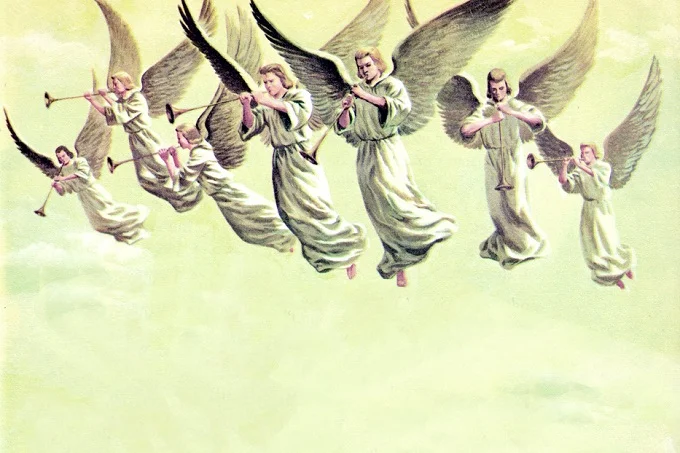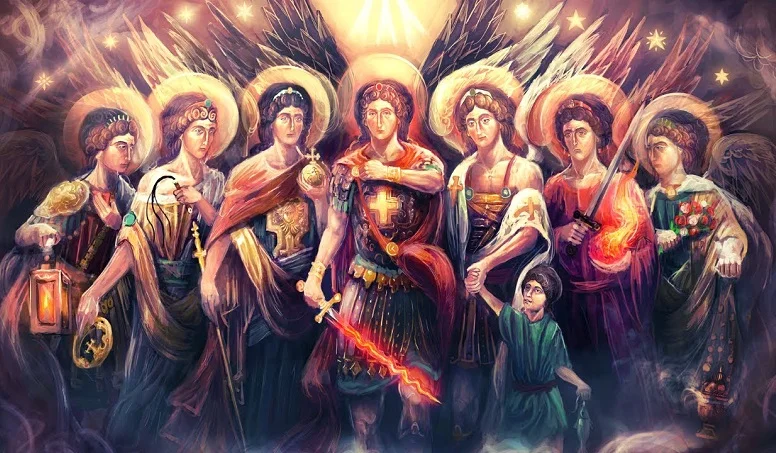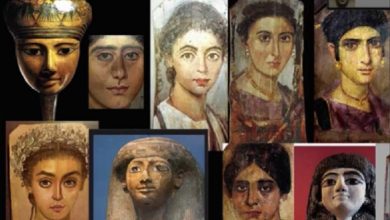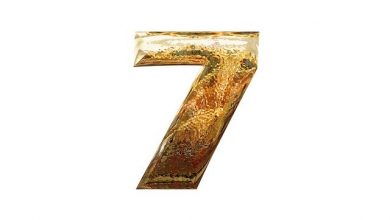An inexplicable cult of seven archangels

The story of seven archangels falls into the category of those occurrences that take place in plain sight of everyone and draw the attention of thousands of people, but the core of which continues to be a mystery even after seven seals have been broken.
Stories in which supernatural occurrences, religious rites, and other completely out-of-this-world occurrences are combined in the most baffling manner possible.
The manifestation of the Prophet in the world
A guy called Amadeus first showed up in Rome in the year 1460. He was a member of a distinguished Portuguese family and had a Portuguese birthplace. Mystical visions began to appear to him at a young age, and by the time he reached adulthood, many people in the Vatican regarded him as a saint.
Even the responsibility of founding and constructing new monasteries was entrusted to the Blessed One. This time, Amadeus delivered a fresh revelation to the papal throne, which heaven gave to him to share with the world. He said that the Christian world must undergo a transformation and move into a more intimate communion with the powers of divinity. In the last vision, the Prophet from Portugal was greeted by seven archangels, representing God’s seven most powerful assistants.
7 Archangel’s names and meanings
It would seem that the Catholic Church has had prior knowledge of these archangels for quite some time. Even in the religious ceremonies, they were referred to by their Hebrew names: Mikael, which means “like God;” Gabriel, which means “the power and might of God;” Raphael, which means “divine dignity;” Uriel, which means “God’s light and fire;” Selaphiel, which means “the prayer of God;” Yehudiel, which means “the glory of God;” and Barachiel, which means “the bliss of God.”
However, there was a hidden meaning behind each name. They did not provide the people with the totality of communication with them that they were capable of having, summoning them to prayers using combinations of sounds that were more appropriate. This time, the seven highest messengers of God came to Amadeus using the commonly associated names. In their visions, they asked directly for the following in order for justice to be restored: first, that the church officially recognize them under their real names; second, that they are given universal public worship in all Catholic churches; and third, that their very own unique temple be constructed for them.

Angels and planets
In point of fact, the religion of the seven archangels, also known as the religion of the seven spirits, had a long and illustrious history. In the middle of the eighth century, Archbishop Adalbert of Magdeburg, who was notorious for his morbid interest in magic and the occult, appeared in front of the highest ecclesiastical court, which was presided over by Pope Zachary. The court was tasked with determining whether or not Adalbert should be excommunicated. During the divine rituals, Adalbert was accused of using aspects of ceremonial magic and calling upon the seven spirits. As a consequence of the trial, the Catholic Church did not use the names of any of the seven higher archangels until the XV century. However, the names of the first three of these archangels kept their full splendor and purity during this time period. Concerning the individuals’ genuine monikers, this issue has not been resolved as of the current day.
Archangels are depicted in the Bible as spiritual creatures that act as an intermediary between God and humans. To use an allegory from the Catholic electronic encyclopedia, archangels may be thought of as a special kind of service personnel that sits on God’s throne. The same online site calls attention to the fact that believe in archangels, who are spirits that intervene between God and man, is typically representative of individuals who are Semitic. And the Sumerians, one of the first known human societies, had this understanding of the moon, stars, and planets. Occultists continue to associate the heavenly bodies of the Solar System with a variety of pagan gods, including Mitra, Apollo, and Lucifer, amongst others.
However, the Vatican categorically rejected the angels’ request to meet their requirements. Despite the fact that Amadeus had an excellent reputation, both Pius II and Sixtus IV, who were known for being good-natured and who indulged the Inquisition in every manner, were equally resolute in their refusal of the reforms that were required by the archangels. There were others who saw the vision of the fortunate one as well.
During the time when Amadeus was having conversations with angels, the city of Palermo in Sicily was the location where a picture of seven archangels with the same names was recovered from the remains of an old church. The archangels requested homage from the Portuguese under these names. According to Evd de Merville, who was in charge of documenting the history of the church, these names were written down and kept beneath each angel’s painting. On the same day, an old prophesy was disclosed in Pisa in a manner that was comparable to what had happened in other locations. This revelation anticipated the resurgence of the worship of the Seven Archangels. Pope Sixtus IV was taken aback by all that had happened, yet he did not waver from his decision to reject it. The Prophet from Portugal passed away in the year 1482 without having accomplished anything.
Unknown cause of the pandemic
However, that wasn’t where the tale ended. These miracles have now become significant pieces of information for Christians. They were concerned about the archangels and sympathized with them; as a result, in the year 1516, the Vatican caved into the requests of the seven patrons who were invisible. At that point in time, almost all of Italy’s chapels and churches had a fresco or mosaic depiction of the Sicilian prophetic picture. This was the case for the vast majority of these buildings. In that year, a structure known as the “Temple of the Seven Spirits” was constructed close to Palermo. In all of the holy ceremonies that took place there, archangels were referred to by their own names, and all prayers were directed only at them. Antonio Duca was ordained as a priest at this temple, and he reported seeing visions of seven archangels shortly after taking up his position. They appealed to the leaders of the Vatican via the new Prophet, pushing them to finally accept their actual identities and start worship of them on a consistent basis. This was done through the new Prophet.
In addition to this, a new requirement was imposed, which was that they construct a second personal temple for themselves, but this time in Rome rather than elsewhere. Strangely, the archangels desired for the temple to be built on the site of an opulent bathing complex constructed during Emperor Diocletian’s reign. The urban legend states that 40,000 Christians and 10,000 more martyrs were engaged in the building of these structures. In these baths, ancient Romans enjoyed a wide variety of sensual delights and drank wine. In later times, a wide variety of sorcerers and necromancers picked their remains because of its mystical significance. There is no way that a house of worship dedicated to God could ever be constructed in such an odd location.
In spite of this, Pope Julius III gave the go-ahead in 1551 for the preliminary cleansing and consecration of the remains of the baths, as well as the building of a temple there that was later given the name “St. Mary of the Angels.” It did not live long, giving the impression that some unseen powers brought it to full ruin and annihilation. Just two years later, an unusual outbreak of obsession and insanity spread over the city of Rome, which is known as the Eternal City. The chronicler asserts that the whole city of Rome was under the influence of the devil at the time. In the heavenly rituals for redemption from the obsession, seven spirits were summoned by their genuine names. This was a miraculous method, according to our knowledge, that helped to put an end to the obsession. According to the chronicles, “the plague just ended like it was magic.”
From sunrise to dusk
After that, Pope Paul IV sent a hasty summons to the Vatican to have Michelangelo present himself. Following the creation of an innovative architectural design by the renowned architect, work on the building of a magnificent temple on the site of the earlier one got underway. The whole time it was being built, grateful spirits transformed it into a never-ending series of miracles that followed one another, and even a single miracle that occurred again and over again. A replica of the prophetic figure that had been discovered in the area around Palermo was placed on the highest point of the altar in the new temple. In the presence of all of the cardinals, Pope Paul IV issued a solemn order mandating that the real names of the higher archangels be used in church services going forward and indefinitely to acquire the legal rights associated with those names.
A few times later, Pope Pius V bestowed his blessing on the ceremony in honor of the Seven Archangels so that it could be disseminated across Spain. He said in a letter that accompanied the blessing that “one cannot overdo it in glorifying these seven rectors of the universe.” Henri Corben, a contemporary French philosopher and theologian, asserts that throughout the seventeenth century, the religion of the seven spirits extended from Italy to other countries.
It seems that there would be no one else who could stop the heavenly patrons from coming to humanity in their own guises at any point in the future. However, after precisely one hundred years, Cardinal Albicius issued an order that all seven of the archangels’ proper names be removed from the walls of temples and from the ceremonies that were performed by the church. It was not until the nineteenth century that attempts were made to restore justice.
In 1825, a certain nobleman from Spain, supported by the Archbishop of Palermo, appealed to Pope Leo XII with an appeal to return the real names of the seven spirits to their former glory. This was the first time that such an attempt was recorded. The leader of the Catholic Church at the time then gave permission for the ceremonies to be restarted for the glory of these spirits, but he prevented people from using their actual names. Demands to revive the worship of the “seven heavenly spirits” were made throughout the middle of the “enlightened era” by both the clergy and common parishioners. This was the case even though the practice had been outlawed.
Public organizations even existed in Italy, Spain, and Bavaria to reproduce the cult of the Seven in its entirety throughout Europe. These organizations’ goals included: Church leaders, government officials, and even crowned heads were all present in these organizations at various points in time. However, the Vatican steadfastly maintained a suspicious quiet throughout the whole affair.
What was the mystery behind these authentic names? Why were the highest hierarchs of Catholicism so wary of their universal use? What was the passion for these authentic names that prompted bishops and influential eminent persons to raise the public to defend rituals in honor of the Seven Archangels – all this has remained a mystery—one of the many secrets of our frail and imperfect world.




